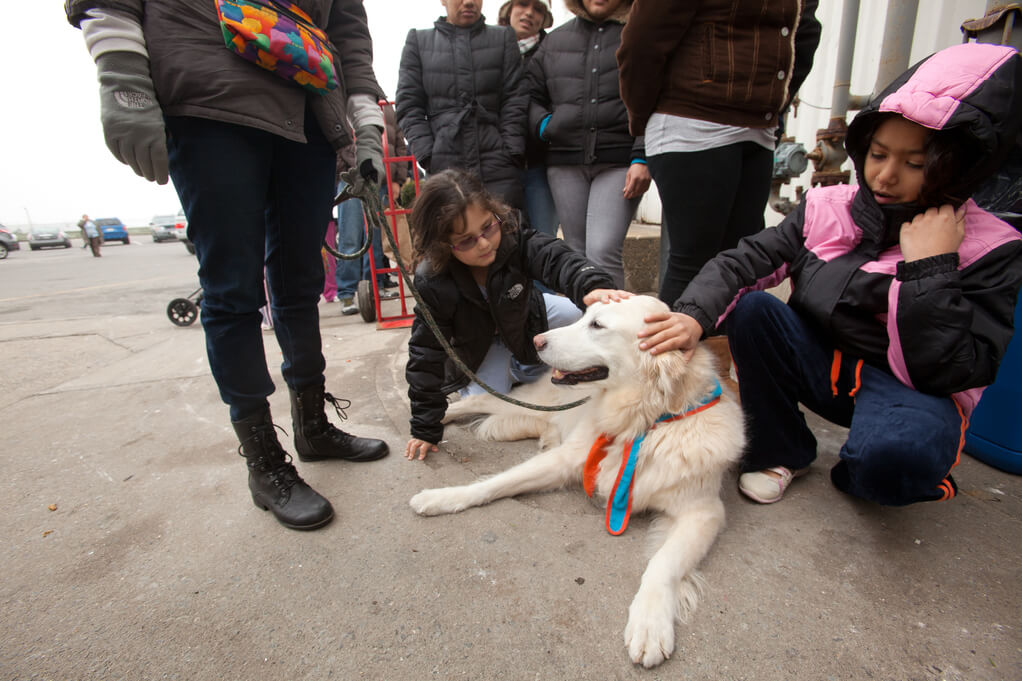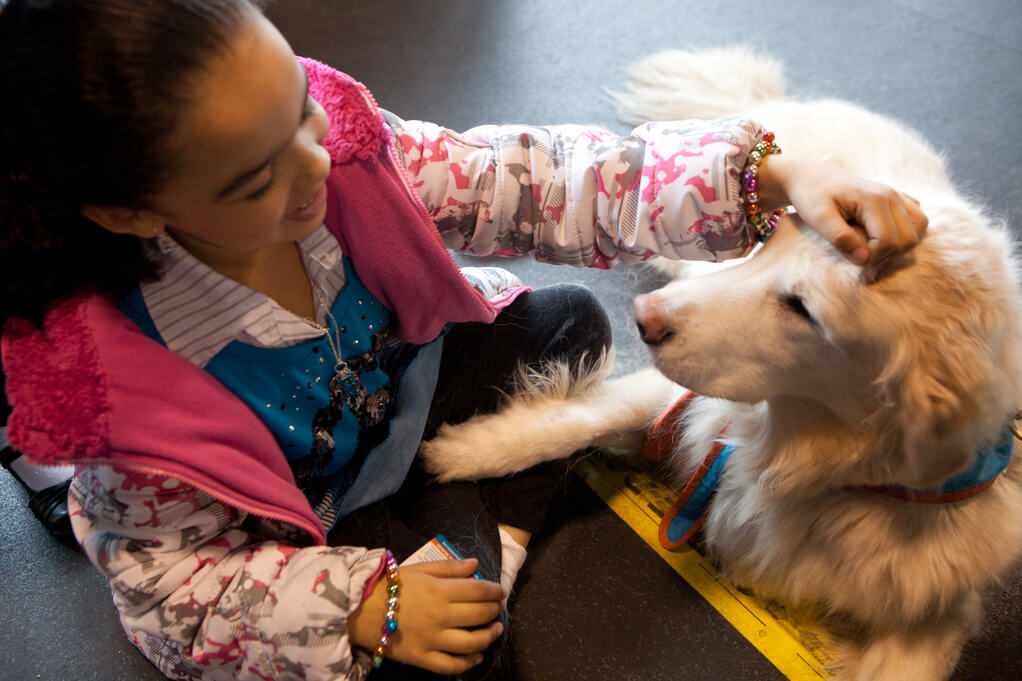Main Menu
Author: Hannah Vick, Assistant External Affairs Officer, Joint Information Center, New York Hurricane Sandy
Maverick was released from Guiding Eyes as a puppy, yet his work as a therapy dog helped countless of people through challenging times. His story is yet another example of how all Guiding Eyes dogs make a difference – regardless of their career choices. This story was originally written for the FEMA website.
 When Jack Zenkel, 10, was in the hospital with a serious head injury six years ago, his mother, Michele, stood vigil. She was worried, but determined to remain hopeful. While Jack was resting in his hospital bed, a woman with a small, furry therapy dog entered his room. Upon seeing the dog, Jack’s face immediately lit up. For the next few minutes, Jack petted and snuggled with the dog. “I was amazed at the wonderful effect the dog had on my son. The dog made a huge difference.”
When Jack Zenkel, 10, was in the hospital with a serious head injury six years ago, his mother, Michele, stood vigil. She was worried, but determined to remain hopeful. While Jack was resting in his hospital bed, a woman with a small, furry therapy dog entered his room. Upon seeing the dog, Jack’s face immediately lit up. For the next few minutes, Jack petted and snuggled with the dog. “I was amazed at the wonderful effect the dog had on my son. The dog made a huge difference.”
As Jack’s condition began to improve in the hospital, Michele started thinking about the family’s golden retriever, Maverick, back at home. They had adopted him from Guiding Eyes as a puppy and he had always had a gentle, patient disposition.
Although he wasn’t quite guide dog material, Maverick, was accepted by the Good Dog Foundation, non-profit organization based in New York City dedicated to “dogs helping humans heal.” Good Dogs and their handlers regularly visit children and adults in hospitals, nursing homes, group homes, schools and libraries.
Within 48 hours of landfall of Hurricane Sandy, Michele traveled with Maverick from her home in WestchesterCounty to the FEMA Disaster Recovery Center (DRC) in Long Beach, NY, where the storm had swept through the beach community. “Having a dog onsite not only helps reduce stress levels for some, but it’s great for the parents with kids who need to take care of paperwork,” says Michele.
This is especially true for those families who were displaced and whose pets are at shelters. When survivor Anna Park walked into the DRC one day in December, her two daughters ran squealing over to the gentle sandy-colored canine. The family’s home, a few blocks from the beach, had been inundated with water, waist-deep on the night of the storm. Park grabbed her two daughters, Eliana, 6 and Jessica, 5, and their three Chihuahuas and escaped through the rushing water.
 Because their first floor apartment had to be gutted, Park and her children are staying with her mother nearby. But with no room for their dogs, they have been boarding at an animal shelter.
Because their first floor apartment had to be gutted, Park and her children are staying with her mother nearby. But with no room for their dogs, they have been boarding at an animal shelter.
The young girls spent the next hour petting and chatting with Maverick, giving their mother much needed time to speak with disaster recovery officials. Park was receiving rental assistance from FEMA, but her job at the local library was recently cut from full-time to part-time. She is looking for a full-time position and a new place to live, and wanted to learn more about other assistance she might qualify for.
“You’re not like our puppies,” Eliana told Maverick. “They’re wild. My grandma won’t let them in the house.”
“We like you almost as much,” her sister Jessica added.
Maverick did not seem offended at all.
When it was time to leave, they hugged him, finding it hard to let go of the puppy who was released from guide dog school, but who still grew up to live a life of service.